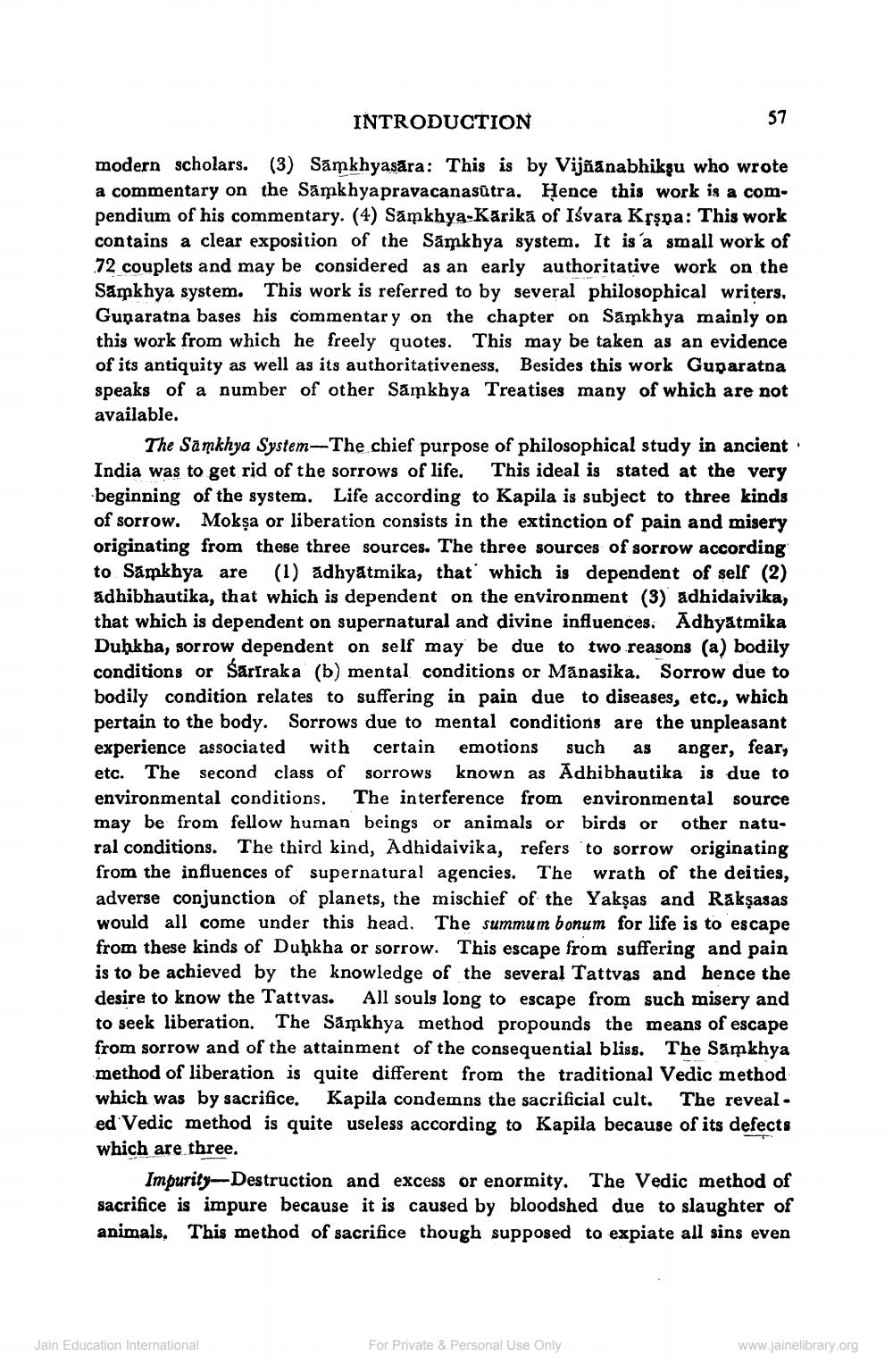________________
INTRODUCTION
57
modern scholars. (3) Sāmkhyasara: This is by Vijñanabhikṣu who wrote a commentary on the Samkhyapravacanasútra. Hence this work is a compendium of his commentary. (4) Sámkhya-Karika of Isvara Krspa: This work contains a clear exposition of the Samkhya system. It is a small work of .72 couplets and may be considered as an early authoritative work on the Samkhya system. This work is referred to by several philosophical writers, Gunaratna bases his commentary on the chapter on Samkhya mainly on this work from which he freely quotes. This may be taken as an evidence of its antiquity as well as its authoritativeness. Besides this work Gunaratna speaks of a number of other Samkhya Treatises many of which are not available.
The Samkhya System-The chief purpose of philosophical study in ancient India was to get rid of the sorrows of life. This ideal is stated at the very beginning of the system. Life according to Kapila is subject to three kinds of sorrow. Mokşa or liberation consists in the extinction of pain and misery originating from these three sources. The three sources of sorrow according to Samkhya are (1) adhyatmika, that which is dependent of self (2) adhibhautika, that which is dependent on the environment (3) adhidaivika, that which is dependent on supernatural and divine influences. Adhyatmika Duhkha, sorrow dependent on self may be due to two reasons (a) bodily conditions or Sariraka (b) mental conditions or Manasika. Sorrow due to bodily condition relates to suffering in pain due to diseases, etc., which pertain to the body. Sorrows due to mental conditions are the unpleasant experience associated with certain emotions such as anger, fear, etc. The second class of sorrows known as Adhibhautika is due to environmental conditions. The interference from environmental source may be from fellow human beings or animals or birds or other natu. ral conditions. The third kind, Adhidaivika, refers to sorrow originating from the influences of supernatural agencies. The wrath of the deities, adverse conjunction of planets, the mischief of the Yakşas and Rakşasas would all come under this head. The summum bonum for life is to escape from these kinds of Duḥkha or sorrow. This escape from suffering and pain is to be achieved by the knowledge of the several Tattvas and hence the desire to know the Tattvas. All souls long to escape from such misery and to seek liberation. The Samkhya method propounds the means of escape from sorrow and of the attainment of the consequential bliss. The Samkhya method of liberation is quite different from the traditional Vedic method which was by sacrifice. Kapila condemns the sacrificial cult. The reveal - ed Vedic method is quite useless according to Kapila because of its defects which are three.
Impurity-Destruction and excess or enormity. The Vedic method of sacrifice is impure because it is caused by bloodshed due to slaughter of animals. This method of sacrifice though supposed to expiate all sins even
Jain Education International
For Private & Personal Use Only
www.jainelibrary.org




